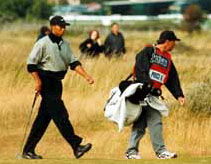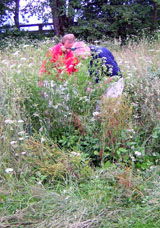More slow play remedies
'Greed and impatience may well be the dark culprits of this burgeoning problem'. What do you think?

Too little time between groups, deep rough at driving distance limits and new technology has been blamed for the growing emergence of slow play at courses around the UK. Golfmagic visitors have identified dozens more reasons and suggested remedies but greed and impatience may well be the dark culprits of this burgeoning problem.
| |
Anxiety to get started with the group ahead still in range can also cause hold-ups in social games.
Overcrowding the golf course must be avoided. Starting intervals should be widened.
Play from the most appropriate tee is recommended to avoid making hole positions too difficult. | |
Ensure that the length and location of the rough avoids numerous lost balls and that the speed of the greens is reasonable.
Adopt favourable sequences of holes to avoid bottlenecks Fore example an opening par-5 followed by a difficult par-3 is a recipe for slow play.
Clubs and their professionals should communicate with all players and advise what is expected of them, to exercise etiquette at all times and be ready to play
|




